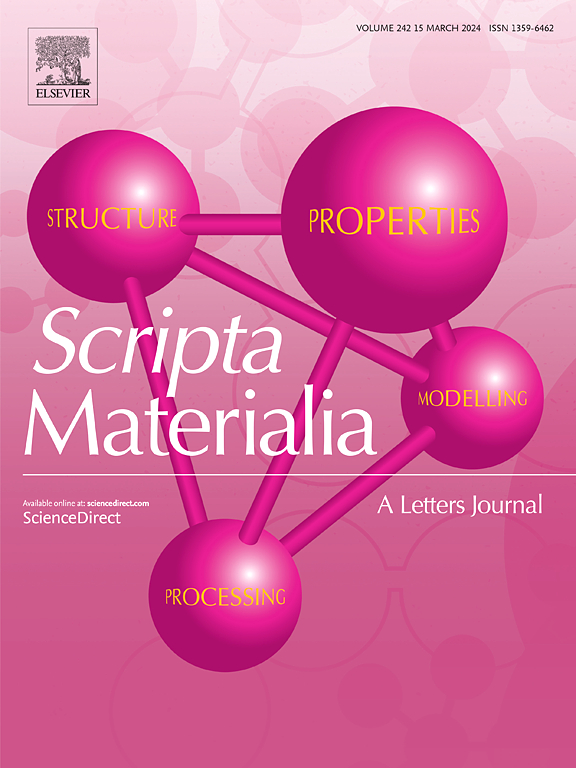Gamma-ray promoted defects dipole migration and fast aging mechanism in KNN-based ceramics
IF 5.3
2区 材料科学
Q2 MATERIALS SCIENCE, MULTIDISCIPLINARY
引用次数: 0
Abstract
The property evolution of piezoelectric ceramics under extreme environments such as gamma irradiation still lacks research. Here, the evolution of structure and electrical properties for potassium sodium niobate [K, Na)NbO3]-based ceramics under γ-ray irradiation was systematically investigated, with a focus on possible defect dipole migration mechanism. Compared with unirradiated ceramics, ceramics after irradiation have a stable d33 and rapid increase of Qm as well as a fast-aging phenomenon. This is attributed to the hardened domain walls, instead of the variation of domain structure and the number of defect dipoles. The internal defect dipoles () are at a lower energy position, which will move toward the domain walls and produce a strong pinning effect during irradiation. This work reveals the property evolution and corresponding defect dipole migration mechanism in the piezoceramics under gamma irradiation, provides basic understanding for piezo-devices operating in harsh environments.

γ射线促进knn基陶瓷缺陷偶极子迁移及快速老化机理
压电陶瓷在伽马辐射等极端环境下的性能演变研究尚缺乏。本文系统研究了铌酸钾钠[K, Na)NbO3]基陶瓷在γ射线辐照下结构和电学性能的演变,重点探讨了可能的缺陷偶极子迁移机制。与未辐照陶瓷相比,辐照后陶瓷的d33稳定,Qm快速增加,且有快速老化现象。这与畴壁硬化有关,而与畴结构和缺陷偶极子数目的变化无关。内部缺陷偶极子([CuNb″‘ - VO..] ’)处于较低的能量位置,在辐照过程中会向畴壁移动并产生强烈的钉住效应。本工作揭示了伽马辐照下压电陶瓷的性能演变和相应的缺陷偶极子迁移机制,为在恶劣环境下工作的压电器件提供了基础认识。
本文章由计算机程序翻译,如有差异,请以英文原文为准。
求助全文
约1分钟内获得全文
求助全文
来源期刊

Scripta Materialia
工程技术-材料科学:综合
CiteScore
11.40
自引率
5.00%
发文量
581
审稿时长
34 days
期刊介绍:
Scripta Materialia is a LETTERS journal of Acta Materialia, providing a forum for the rapid publication of short communications on the relationship between the structure and the properties of inorganic materials. The emphasis is on originality rather than incremental research. Short reports on the development of materials with novel or substantially improved properties are also welcomed. Emphasis is on either the functional or mechanical behavior of metals, ceramics and semiconductors at all length scales.
 求助内容:
求助内容: 应助结果提醒方式:
应助结果提醒方式:


